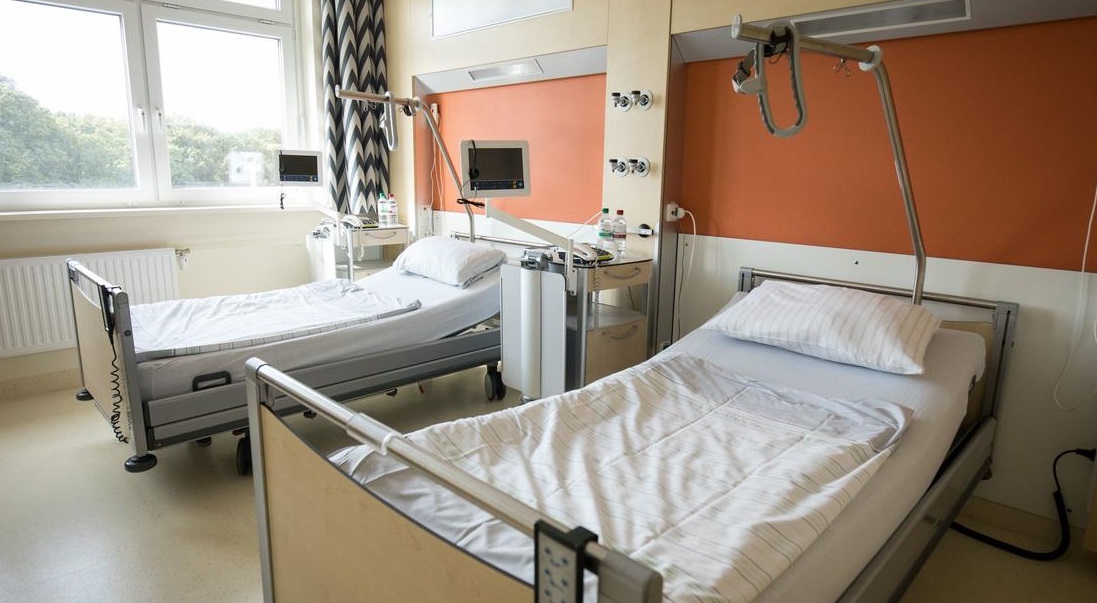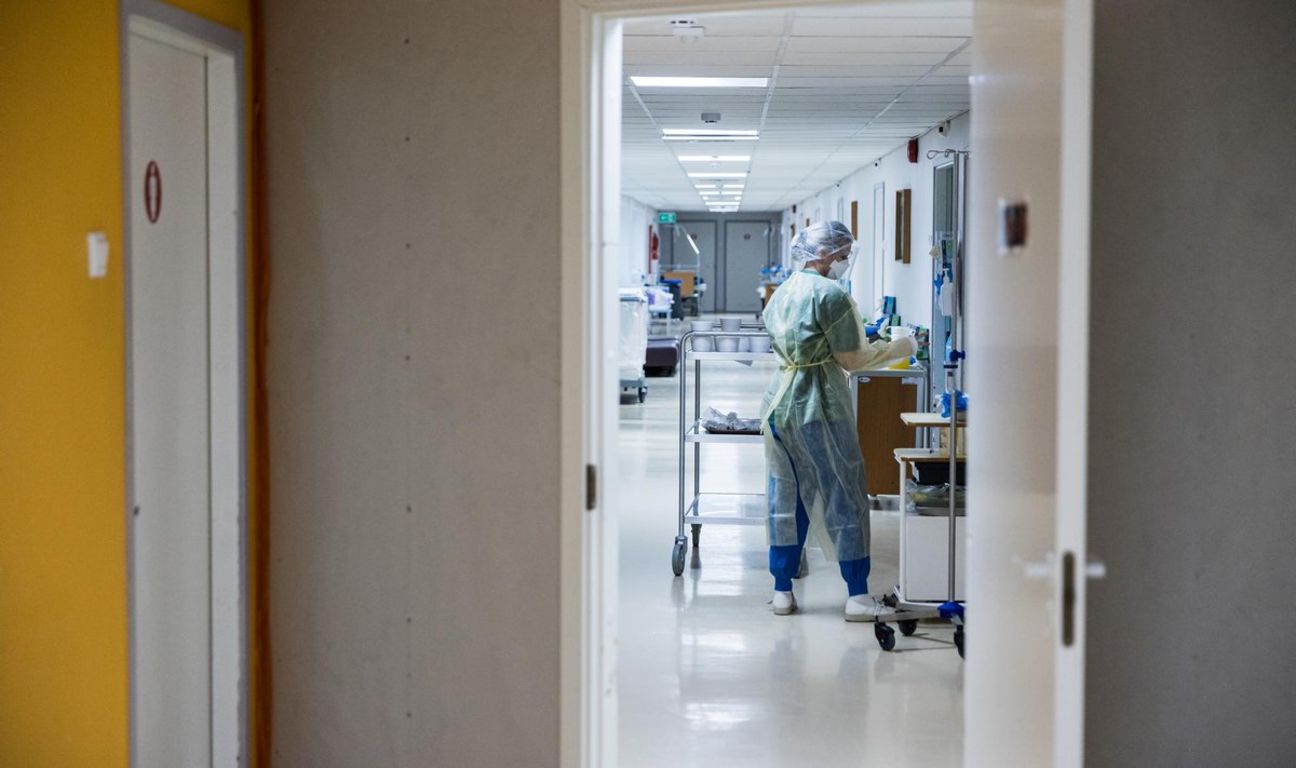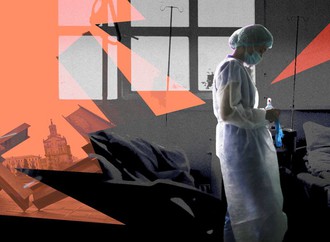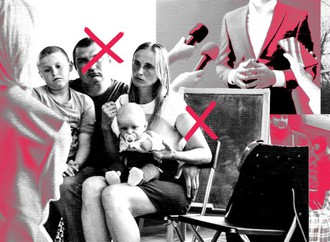Since the beginning of the war, more than 6 million people have been forced to flee, almost 5 of them are officially registered refugees abroad. For most, the experience of being a refugee is a shock and requires significant efforts in order to integrate in new conditions. It is known that a significant number of refugees wish to return home as soon as it is possible and safe enough. In different countries this share is up to 80% of all refugees.
Being a refugee affects not only the psychological state and planning horizon of one's own life, but also the preparedness and available resources for integration. Simply put, compared to migrants, refugees are not necessarily prepared for adaptation - they did not learn the language of the new country, did not get acquainted in advance with possible bureaucratic and financial troubles, did not have the opportunity to find acceptable conditions for stay before departure, etc. Even compared to seasonal workers, who often find themselves not in the most comfortable conditions, the situation of refugees is even more complicated.
One of the areas that most refugees have to face is healthcare - many people need medical care or are simply legally obliged to have health insurance. At the same time, European health care systems are very different from Ukrainian one and have their own urgent problems. In such conditions, many criticize the healthcare systems themselves, referring to the "convenience" and less bureaucratic burdens in Ukrainian healthcare. But is this criticism fair?
This article will look at the principles by which European healthcare systems function on the example of Germany, where a large number of Ukrainian refugees are currently staying, their differences from Ukrainian healthcare, the problems faced by refugees and possible social consequences of such experiences.
How are European health care systems organized?
Context and typology
Social rights, including the right to healthcare, are tied to citizenship and historically linked to political struggles at the national level. Their structures were not aimed at universal accessibility - the original goal was to preserve the health of the population within nation states. With globalization and waves of migration, the exclusivity of these rights has become visible - this is the main basis for the legal and social difficulties faced by Ukrainian refugees, who are de facto "strangers" in host societies.
There are dozens of classifications of social policy systems in sociology. One of the most famous and influential is the classification of the Danish sociologist Esping-Andersen, who proposes to distinguish three types of systems in Western European countries:
1. Conservative, which aims to preserve social hierarchies and family structures, it involves the redistribution of resources (typical examples are Germany, Austria, France).
2. Liberal, which is focused on solving social problems through market mechanisms, provides state aid only in cases of extreme necessity and does not aim at redistribution of resources (typical examples - Great Britain, USA, Australia).
3. Social democratic, which aims at the most universal state aid to all segments of the population to reduce the impact of market mechanisms on society and, accordingly, provides for maximum redistribution of resources (common in Scandinavian countries).
Although it is possible to identify typical countries for each of the options, in reality different sectors of the social systems operate according to different principles. In the case of Germany, the conservative principle is dominant - most notably in the pension system, where there is no general pension fund, but different programs, and the level of pension provision depends on the level of salary a person has had during their life. As a result, some professions (e.g. doctors and lawyers) actually reproduce their social status for generations, which is the goal of the conservative system. For migrants, an important nuance of such systems is that anyone in such a conservative system gets the more benefits, the better their initial social position is and the longer they pay contributions. Refugees are thus not the biggest beneficiaries of the conservative principle of social policy.
Almost universal German healthcare
Despite the general conservatism of the social system, healthcare in Germany works rather on the principle of social democratic systems[1]. Thus, 88.1% of all German residents (not only citizens) were insured under state programs, 10.5% under private programs, and the remaining 1.4% is a number of different cases, only part of which are people without any type of health insurance.
In many cases, health insurance is mandatory. This applies to: employees whose annual earnings (gross) are below 64,350 euros[2], recipients of unemployment benefits, students, retiree, orphans, some entrepreneurs[3], people with disabilities living in institutions, artists and publicists. In addition, children and students whose parents have state insurance are insured free of charge until they reach a certain age.
For all employed people who are insured under state programs, the monthly cost of insurance is approximately 14% of the monthly salary and is shared equally between the employee and the employer. Different state insurance companies may add small additional contributions to this amount.
Insurance healthcare in Germany is very common, it de jure and de facto covers a wide range of services. The law stipulates that all insured persons have the right to sufficient treatment that meets the needs and scientific consensus. Such treatment includes primarily the services of doctors, dentists and psychotherapists, the use of medication, medical hygiene items and other supplies, home and inpatient medical care, rehabilitation services, etc.
Such a list does not give a specific understanding of what is available under the insurance, but explains that the goal is to broadly meet the needs of the population. In practice, general practitioner consultations, consultations of specialized doctors, most tests[4], medical examinations and, importantly, medications covered by the insurance companies. Partial co-payments are required for hospital stays: they amount to 10 euros per day, but not more than 280 euros per year - everything else is covered by insurance. Co-payments are also required for medication[5], some rehabilitation services and non-medical products (dietary supplements, some herbal medicines, etc., as determined by the insurance company).

This is what a standard ward looks like in one of the Hamburg clinics. Photo: picture-alliance / dpa / C. Charisius
Harmful austerity
European health care systems and the German one in particular have their structural problems. The same law that regulates the range of services and medications covered by public insurance mentions that payment for services should follow the "principle of cost-effectiveness": "they (medical services) must be sufficient, appropriate and economical, not exceeding the level of necessity". Such rhetoric can easily become a basis for reducing resources or not providing them where they are needed. Currently, such processes are not widespread, but only occasionally used opportunistically in political discussions.
A much larger, perhaps major problem is the shortage of doctors and nurses, which leads to long waiting times for consultations and tests. According to surveys in 2020, a consultation with a specialist requires more than three weeks waiting time in Germany, still 37% of respondents were able to see a family doctor on the same day, and a half managed to get a consultation within three days. The situation concerning hospital stays and planned operations has also worsened due to pandemic: many hospitals could not simultaneously provide care to both covid patients and those who were waiting for planned operations. The media even talked about latent triage based on patient's chances of survival, but officials deny[6] such practices.
One of the main reasons for the lack of resources is the privatization and commercialization of hospitals. First, even public hospitals are under pressure to save money wherever possible and to prioritize services that generate more revenue. The system of hospital financing is designed in such a way that inpatient hospitals suffer the most from this, because the paid time of a patient's stay in the hospital is limited, and each additional day is unprofitable for the hospital. Consequently, the average hospital stay decreased from 9.2 days in 2000 to 6.6 days in 2019.
Data on medical staff working in hospitals are also revealing - from 2002 to 2006, 33 thousand jobs disappeared, and as of October 2021, the shortage of such workers was estimated at 100,000. Secondly, the share of private hospitals has increased significantly - from 21% in 1999 to 38% in 2019. In such hospitals, there is even more pressure to make more profit - as a result, "unprofitable" services are not provided. At the same time, half of all available beds belong to state-owned hospitals, although they account for 28% of all hospitals. Thus, the increase in the share of private hospitals is likely to further reduce the capacity of the healthcare system.

Doctors in one of the Berlin clinics. Photo: Argo Ginger
The same policy has been pursued in Ukraine since the beginning of the medical reform, which reduces the number of hospitals instead of re-profiling them according to the needs of the population. Doctors, who are actually left without work due to such cuts, are not provided with adequate alternatives, which is justified by the fact that they must think like entrepreneurs and meet the ideals of the market and solve their issues for themselves. In Ukraine, the closure of infectious diseases hospitals was postponed due to the pandemic, similarly there was a wave of criticism about the lack of beds during the pandemic in Germany. The fact that privatized elements are the weakest links regardless of the system became obvious during crises that put pressure on healthcare.
The pandemic has also shown another weakness of the German system - perhaps best illustrated by the situation with junior medical staff. These categories of workers, unlike doctors, do not work for their own "praxis" (their small businesses-offices), but are often employed through small and medium-sized intermediary firms. Their employment is actually comparable to the working conditions of the most precarious professions, such as couriers. However, a year ago, massive multi-week strikes began in Berlin, supported by 98% of workers in Charité and Vivantes hospitals. In October, agreements were reached on a collective agreement that was to significantly improve the situation of healthcare workers.
This story is important because the situation is similar in Ukraine with the movement of nurses "Be like Nina", but it is much more difficult for Ukrainian nurses to achieve significant progress compared to their German colleagues. This is just one example of the fact that in Germany the healthcare system works more holistically and integrates balancing tools that allow for the whole system to be stable. Such things are not visible for an average patient and even more so for refugees, but they are objectively important for understanding the quality of German healthcare.
Summarizing, structural problems of the German healthcare system are precarious working conditions of certain categories of employees, sometimes shortage of doctors and increasing priority of profit in privatized healthcare sectors.
What are the differences between the healthcare systems of Ukraine and Germany?
Apart from the current problems of commercialization of healthcare, the focus of German healthcare is historically different from the Ukrainian one. Ukraine built its healthcare system during the Soviet era and has not significantly reformed it since independence, at least until 2018 and the implementation of the healthcare reform. The Soviet (and consequently Ukrainian) system had two key differences from the German one:
1. Context - the German system was formed in capitalist conditions, unlike the Ukrainian one, which influenced the very concept of healthcare. In the political dimension, Germany was still a democratic country for most of the existence of a consolidated social policy, in addition, the principle of grassroots organization was historically rooted. The Ukrainian healthcare system was built in authoritarian and totalitarian conditions, which led to rigid hierarchies and centralization.
2. Goals - the political goal of the German system at the beginning of its consolidation in the 19th century was the co-optation of leftist movements; the Soviet system was conceptually universalist. While the German system is very stable and survives crises relatively easily, the Ukrainian system was hit hard in the 1990s not only because of a deep crisis that deprived it of resources, but also because of a systemic crisis - the whole concept of healthcare did not correspond to the new economic reality. The lack of a meaningful concept remains an urgent problem to this day, and the recent healthcare reform is proof that the only strategy that remains is to save money on the social sector.
The consequence of these fundamental differences are significant distinctions in the performance of the two health care systems.
Communication and systemic differences
On the everyday level, the most noticeable differences are in the organization of healthcare. In Ukraine, polyclinics, where several doctors of one or several different specializations work simultaneously, are still common. In Germany, due to the aforementioned principle of grassroots organization, the first contact of the patient is a family doctor who works in their own office.

Vaccination center in Berlin. Photo: theconversation
In addition, as it has already been described, in the German healthcare system, patients' stay in hospitals is not a priority, most diseases are treated on an outpatient basis. This has its positive side - better adaptation to everyday life, shorter treatment time, less territorial dependence of patients on the place of treatment. On the negative side, there is discomfort in case of chronic illnesses, when hospitalization is desirable, also difficulties may arise in communication between different specialists in case a patient has several diseases or there are difficulties in diagnosis. These problems could be partially solved by digitalization, in which Germany lags far behind many countries, including Ukraine.
The lack of rigid hierarchies and self-management of most doctors leads to a less centralized and authoritarian system. However, again, this causes problems in coordination and speed of decision-making, which was clearly visible during the pandemic. The system is designed in such a way that family doctors perform the function of "gatekeepers" - that is, they are the first contact persons for the patient. The possibility of consulting directly with a specialist exists (for example, through an online appointment on the doctolib or jameda platforms), still sometimes a previous medical conclusion from the therapist may be expected. This method is used independently by people who are aware of their diseases or patients who want to get to a regular scheduled consultation (for example, at a gynecologist or dermatologist for skin cancer control).
Some of the regulations that exist in Germany are sometimes criticized for their seemingly bureaucratic nature are in fact useful and scientifically justified. The most striking example is probably the regulations on access to antibiotics (which is being implemented in Ukraine only this year) and the process of admitting drugs to the market. The inappropriate use of antibiotics and "fuflomycins" (medications without any effective substance) is more widespread in Ukraine than in Germany[7] and in general in Eastern Europe than in Western Europe.
The rejection of such practices, although it requires effort, is obviously not a shortcoming of the German healthcare system, but rather the low competence of patients in matters of their own health due to constant reproduction of incorrect information and medical myths. It is not about isolated cases of using informal resources to solve urgent health problems, but about the fact that the confrontation with the "uncomfortable" aspects of the German system leads to the conclusion that it is generally bad. From such experiences we should rather draw conclusions on how to improve Ukrainian healthcare.
Resources and their productive use
Currently, the Ukrainian healthcare system is de facto financed on a residual basis. Financing of the sector has been reduced for years:
In terms of the percentage of healthcare expenditures to the budget, Ukraine lags far behind the OECD countries - their average healthcare expenditures are 8% of GDP, while Ukrainian expenditures in recent years have not even reached 4%. Among different sectors, the contrast in healthcare spending between Ukraine and OECD countries is the most significant. In addition to healthcare, Ukraine spends less on environmental policies and public administration, but the difference with the OECD average is less than 1%, not 4-5%, as in the case of healthcare. Speaking specifically about Germany, 13.1% of GDP is spent on health care, hence the Ukrainian and German systems are polar opposite in terms of available resources.
Obviously, despite the seemingly European orientation of Ukrainian policy, improving the resource base of healthcare to match the level of European countries was not a priority. Some systemic elements mentioned above (for example, a system built around family doctors) will be introduced with the medical reform, but without a significant increase in resources they will not make the Ukrainian healthcare system equal to European ones. On the contrary, the reform has been constantly "advertised" as the elimination of unnecessary "redundancies" in the medical infrastructure - and therefore revision of funding priorities is not in sight.
Given the significant difference in resources, it can be assumed that the efficiency and accessibility of healthcare should be different. The productivity of the whole system is difficult to assess, let alone compare the two systems. However, there are indices that evaluate various aspects and parameters of the healthcare. For example, according to the Global health security index, Germany ranks 8th out of 195 with an index score of 65.5, and Ukraine ranks 83rd with a score of 38.9. In addition, Ukraine took 39th place among 43 European countries. This index was developed to compare the readiness of health systems to respond to crises such as the coronavirus pandemic. It integrated a number of indicators: prevention, detection and reporting of infections, rapid response, quality of healthcare, compliance with international standards and environmental risks (the overall biological threat in each country).
Perhaps the most important difference is the availability of public insurance, which provides incomparably better access to treatment for rare and chronic diseases, in particular for people who need expensive medical treatment. Currently, Ukraine has a limited reimbursement program for drugs called "Affordable medication". It covers only some types of diseases - cardiovascular diseases, asthma, type II diabetes, diabetes mellitus and diabetes insipidus, mental and behavioral disorders, epilepsy. Given the very limited resources, such a selection makes it clear that, unlike the German system, the goal here is not to provide each citizen with quality medical care, but to treat common diseases, that is, to reduce risks at the level of the whole society. Therefore, for example, drugs for the treatment of autoimmune diseases, cancer, rare diseases, etc. have to be paid out-of-pocket, which means that many Ukrainians actually have to work for survival and make a choice between health and comfort. The difference is also evident from the data on the structure of expenditures on medical services and treatment:
That is, now, in the absence of a public insurance program similar to German, Ukrainians pay much more in proportion than ordinary Germans with public insurance. Of course, there are patient organizations that provide assistance or discount programs for the purchase of expensive drugs from pharmaceutical companies. However, this is only a shift of tasks that are effectively performed by the state in the better systems to civil society or market.
In such a comparison, we must not forget about the situation of health workers, who effectively sustain this system. The pandemic has shown that a well-equipped and crisis-resistant healthcare system is a priority, and healthcare workers perform critical work for society. As already mentioned on the example of strikes of medical workers, the German system copes with conflicts quite well and eventually makes concessions to workers.
In Ukraine, the situation of doctors, not to mention other medical workers, remains difficult. Trade unions are weak, they are not involved in social dialogue, and local workers who take the initiative and want to defend their rights are often misunderstood or harassed. Many have to work in addition to their main job in order to have enough money for basic needs. Eventually, such conditions force many to emigrate - it has long been known that Ukrainian women play an important role in overcoming the shortage of medical personnel in the EU countries themselves. This situation has only worsened with the war, but if these problems continue to be perceived as irrelevant as long as the war is happening, many will simply not return and post-war reconstruction will become more difficult.
Despite the fact that stereotypes about the "good life in the west" are often very superficial and naive, in the case of healthcare at the systemic level the situation in Germany is much better than in Ukraine. The discomfort experienced by Ukrainian refugees is likely not caused by the "bad" German system, but by their vulnerable position in this system.
What difficulties do refugees from Ukraine face?
In the context of health care, the most frequent problems are long waiting times for health insurance and inaccessibility of doctors' appointments - it can take months to get an appointment with a specialist in large cities where refugees are concentrated. Although Ukrainian refugees should be able to access free medical care immediately upon arrival and a simplified insurance regime has been introduced for this purpose, minimum proofs of the refugee status attainment process are still required, and obtaining them requires some effort. That is, access to the health care system first requires confrontation with other bureaucratic structures, which are as, if not more, limited in their resources as healthcare.
There are also difficulties in communication due to the language barrier, which reduces the quality of medical care or requires greater organizational efforts to find Ukrainian/Russian-speaking doctors or volunteer translators, and thus negatively affects the willingness to seek help. As described in the "Commons" article, simply continuing treatment of diseases diagnosed in Ukraine in the new system is also not so easy - there is a need to confirm diagnoses and find analogues of drugs. Where rehabilitation and long-term therapy are needed, language and cultural barriers can play a crucial role. In such cases, rigidity and uncompromising bureaucratic structures can be disastrous.
It should be understood that some of these problems are caused by systemic shortcomings, such as lack of doctors, and some are the consequences of the social situation of refugees. From the argument above it can be concluded that the combination of factors - language barriers, unfamiliarity with the system, bureaucratic unpreparedness of conservative systems for such shock waves of migration and the general uncertainty of the whole situation puts refugees in a very difficult situation. At the same time, it should be understood that the ability to provide a large part of refugees with free health insurance is the result of the stability of the same system and the rooted principles of solidarity in German society.
Ideally, situational adaptation to the problems of refugees is needed in case no adequate solutions are readily available. However, the proliferation of corrupt practices ("informal pharmacies", doctors writing prescriptions on request, etc.) should in no way be encouraged as a long-term alternative to "go around" the inconvenient aspects of the German healthcare system. It is necessary to mobilize the resources of the diasporas, which in fact is already happening at the grassroots level, but not to create "parallel societies".
It is necessary to use the principle of grassroots organization to be more flexible in meeting the needs of refugees, for example, to ease bureaucratic obstacles that prevent them from consulting suitable Ukrainian specialists, or to create an easier process for confirming Ukrainian diagnoses and medications. Such a strategy would allow refugees to have easier access to healthcare and suffer less from the structural problems of the German system.
Positive changes in the system itself should not be expected in the near future - the bureaucratic structures of Germany are very conservative, and those who promote the commercialization of the medical sector will continue to feel comfortable due to the presence of the neoliberal party in power and the general public fatigue from the conflicts of the pandemic. These conflicts have shown that the best way to resolve them for the benefit of workers and society is through mobilization and public pressure.
What changes can we hope for?
From the point of view of society, the worst possible consequence of massive negative experiences with the medical bureaucracy is the discrediting of the idea of public health insurance as such. The vector of Ukrainian politics is currently extremely neoliberal - for example, since the beginning of the war, several laws that grossly restrict the labor rights of workers and actually shift the burden of the war to them, have been adopted. In particular, this applies to healthcare workers - junior medical staff continues to suffer from disenfranchisement and precarization, and in general, there are no radical changes in the attitude of society and the state towards the medical sector. This is not to say that healthcare is irrelevant because of the war or related economic problems, because medical care (physiological and psychological) is crucial, given the number of casualties and various types of trauma caused by the war, as well as the role of the healthcare system in reconstruction.
Of course, there are a number of aspects with which Germany has structural problems - one of them is digitalization. There is currently no analogue of the “Healthy” system in Germany, even the transition to electronic prescriptions is difficult and slow. After the last elections and the resignation of Minister Spahn, who headed the Ministry of Digitalization before working at the Ministry of Health, digitalization has ceased to be a strategic direction in German healthcare again. And this problem is not only a matter of comfort - digitalization could free up the time and energy of employees who are busy with paper bureaucracy and who are simultaneously lacking in the system. Communication between different doctors could be significantly improved: now it is in fact a burden that patients have to carry for themselves and it harms those who find it difficult to navigate the system and those who are called "complex cases". However, Germany has both resources and systemic capabilities to change this. In Ukraine there are neither resources nor a transparent political context and, importantly, no consolidated public pressure for structural solutions to the problems in the medical sector.
In addition, it should be remembered that the experiences of people who have benefited from state insurance healthcare are especially valuable - for example, those who could not afford the necessary medicines in Ukraine, or those who managed to get quality expertise and diagnostics in the new conditions. For such people, dependence on affordable medicine is not a matter of everyday comfort in the treatment of minor colds - it is a reality that affects all aspects of life, the ability to plan it and live fully.
The best systemic practices and visions should be drawn from the massive experience in European countries. It is obviously unreasonable to simply transfer German realities onto Ukrainian ones, given their deep historical and conceptual differences, as well as political, economic and social differences and inequalities between the countries. Solutions to the existing problems should be derived from materialistic analysis, without ignoring vulnerable groups and people with disabilities (including "invisible diseases"), healthcare workers, disadvantaged social groups and in general all those who are currently ignored by politicians and cannot significantly influence socio-economic policy.
Ukraine needs fundamental changes in healthcare, in particular a greater focus on the real needs of patients and healthcare workers, instead of the commercialization of healthcare, which is taking place within the reform. Resources for building such a system are currently insufficient and they need to be acquired by overcoming corruption and concentration of wealth. It is also necessary to change the attitude of the authorities and the population to healthcare and medical workers - this is one of the critical sectors on which society is based, which became clearly visible during the pandemic and war. Healthcare is not merely a “service”, and patients are not clients. Quality medical care should be the right of everyone. A chance for improvement may arise with post-war reconstruction and influx of new resources. But it is important to form a demand for the necessary changes for society already today, and these changes should reflect the best practices of other countries.
Footnotes
- ^ Esping-Andersen's typology for characterizing health care is criticized by sociologists, in particular because his work is based on the analysis of transfer payments, while the healthcare system provides services that cannot be simply reduced to quantitative indicators. However, this article is about the general principle of the system functions, which leads to almost universal access to healthcare.
- ^ That is, 5362 euros per month. As of 2021, the average gross salary in Germany was 4100 euros per month, the median salary was 43 200 euros per year or 3600 euros per month. Those whose earnings exceed the above maximum have the right to remain insured by state companies or switch to private insurance schemes.
- ^ Entrepreneurs working in agriculture and forestry and their family members who work with them.
- ^ An exception during the pandemic was, for example, the test for the amount of antibodies against covid.
- ^ Usually they reach 5-10 euros, depending on the market price of the drug.
- ^ Recently, the German government has clearly spoken out against the introduction of such practices, as they contradict the constitution, which enshrines the equal right to health care for all. It is worth emphasizing that the situation in Germany, even at the peak of the pandemic, made it possible to receive patients from the Czech Republic and Poland.
- ^ Although there are exceptions, such as homeopathic remedies, which are covered by some state insurances.







_category.jpg)




